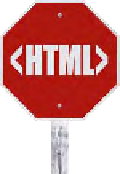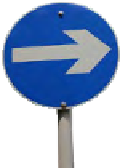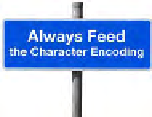HTML and CSS Reference
In-Depth Information
Webville Guide to HTML
In this handy guide, we've boiled down writing well-formed HTML pages
into a common sense set of guidelines. Check them out:
Always begin with the <doctype>.
Always start each page with a doctype. This will
get you off on the right foot with browsers, and
with the validator too.
Use
<!docytype html>
at all times, unless
you really are writing HTML 4.01 or XHTML.
The
<html>
element: don't leave home without it.
Following the doctype, the
<html>
element must
always be the top, or root, element of your web
page. So, after the doctype, the
<html>
tag will
start your page and the
</html>
tag should end it,
with everything else in your page nested inside.
Remember to use both your
<head>
and your
<body>
for better HTML.
Only the
<head>
and
<body>
elements can go
directly inside your
<html>
element. This means
that every other element must go either inside the
<head>
or the
<body>
element. No exceptions!
Feed your
<head>
the right character encoding.
Include a
<meta charset="utf-8">
tag in your
<head>
. The browser will thank you, and so will
your users when they're reading comments on your
blog from users around the world.






